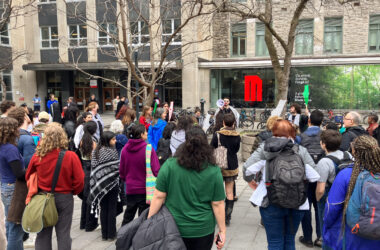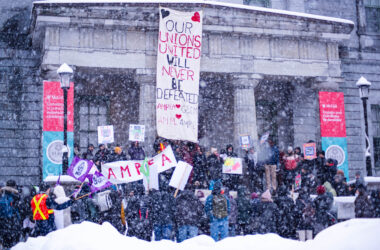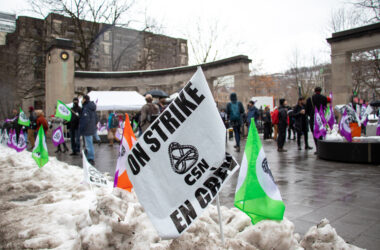Nathan Glazer, the prominent sociologist and professor emeritus at Harvard, delivered two lectures at McGill last week. Glazer is perhaps best known for Beyond the Melting Pot, a pioneering study of different ethnic groups in New York City that he co-authored with Daniel Patrick Moynihan in 1963. His first lecture last week dealt with the state of American race relations during Barack Obama’s presidency, while the second focussed on the role of public intellectuals in the modern era. The Tribune caught up with Glazer between his lectures to discuss America’s contemporary urban dilemmas.You were born to immigrant parents and grew up in working-class neighbourhoods in East Harlem and the Bronx. How did that experience shaped your academic views?I suppose it’s shaped my academic outlook in one respect. I do believe that the ordinary public schools, which I attended, provided opportunities for upward mobility and still do. In fact, they do so more than they used to because there are many more foundation-supported programs. I do feel that America provides opportunities, and in some ways, one needs the sort of reform within the black community that would make it possible to take more advantage of opportunities.
Can you tell me a bit about your experiences at City College in New York in the 1940s?City College was almost entirely populated by immigrant children. It had many virtues – one virtue was that it was free. Another virtue was that it was not a residential institution, so one could live at home. It was a ferment of political activity on the one hand with perfectly adequate academic standards on the other. It was a unique moment.
One of the interesting things you mentioned in your lecture was that, in many ways, the position of young black males in the U.S. has declined since the 1970s. Can you elaborate on that?Well, that’s what the figures seem to show. We’re talking about the non-college-going group, which is by far the large majority – particularly those who have not even gotten high school degrees, which may be one half of the young black male population. Their situation has declined and it has declined in particular, because the kind of jobs that were once available are just not there. The manufacturing jobs, which those without particular education or skills can take, [are being] replaced by service jobs.The figures do show that for blacks without high school diplomas, and even with high school diplomas, the percentage working is relatively small. It used to be close to two thirds with a job, and now it’s more like one third. In other words, certain elements of the black population are worse off than they were.
Is there a clear role for public policy in turning this around?It is clear what could help: better schooling and better outcomes in schooling for blacks. But despite many, many efforts at improving educational outcomes for blacks, overall progress has been very slow. We do have various kinds of small programs like charter schools and foundation-supported efforts. Intensive efforts have been made to bring blacks, and particularly black males, up to the level where they can go to college, and these programs have worked well. But they do require a lot of money, a lot of effort, [and]dedicated individuals, and we have not really found ways of multiplying them sufficiently [vis-Ã -vis the] public school, which for urban blacks has just not been successful.There’s also the remarkably high rate at which these young black males fall afoul of the law and serve prison terms or are put on probation. The percentages are phenomenal. Now, one answer is that we need alternatives to standard punishments in the form of imprisonment. There are alternatives, particularly for those who get involved in drug dealing in the inner cities … maybe the reform of American drug policy. On the whole, I think American drug policy has been unenlightened and overly punitive.
Much of your career has been devoted, in one form or another, to the study of American cities. What’s the greatest challenge facing American cities today?The greatest challenge is the problem of concentrated inner-city poverty and areas of mixed problems – primarily minority, and more significantly black than even Latino – that have been with us for a long time. We can do more to improve the American city by making progress in that area, difficult as it is, than by any other means.
– Compiled by Theo Meyer








